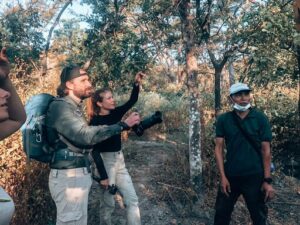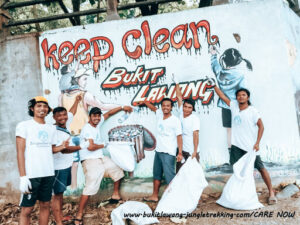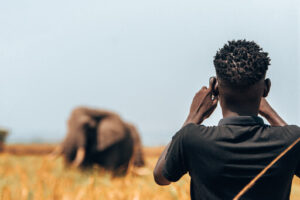On November the 1st, 2020, we officially launched The Green Stamp. During the first year, we have experienced some unforgettable moments. From amazing new collaborations with wildlife projects to an incredible amount of donations we collected.
Before launching The Green Stamp, we had a clear vision in mind. We wanted to reach as many travelers as possible, to help them book an ethical wildlife tour rather than a regular (or even harmful) one. We partnered with wildlife projects that follow three unique guidelines:
- The wildlife projects host sustainable tours/safaris (avoid the use of plastics, use a canoe instead of a motorboat, if safe)
- The wildlife projects host ethical tours/safaris (no touching the animals, no feeding, no selfies, etc.)
- The wildlife projects all donate a certain amount of their profits, to protect local communities, wildlife, or nature.
During the year, we had the honor of working closely with these ethical wildlife projects. In this blog article, we share 5 signs you are dealing with an ethical wildlife project. That way, you can recognize them yourself as well!

Ethical wildlife project sign 1:
The very first sign from an ethical wildlife project is their kindness and gratitude. Literally, every time we call with a project, email, or simply tag them in our Instagram stories they express their gratitude. We have never felt any sense of rush or unkindness. So, when you reach out to a wildlife project, make sure you feel into the contact you have. We, for example, have received an invitation to each of the wildlife projects we work with. They not just invite us to visit their project, but also welcome us into their homes and their families! A clear sign you are dealing with an ethical wildlife project is that they instantly make you feel like you are their friend or their family.
Ethical wildlife project sign 2:
We, as digital nomads, can’t do days without this juicy elixir: Wi-Fi. If there is one thing we learned over the past year, though, it’s to always prepare for an unstable Wi-Fi connection during calls with our partners. Funny inside story: with all wildlife projects we work with, during the first call they didn’t show up due to Wi-Fi issues. You can imagine that having Wi-Fi issues also means they couldn’t inform us about this. We, therefore, quickly implemented a 15-minute rule: if the wildlife project doesn’t show up on the agreed date & time, we wait for 15 more minutes. If they then still don’t show up, we send them a message to reschedule.

Ethical wildlife project sign 3:
As both being native Dutch, our passion for adventure, nature, and wildlife isn’t as common. During conversations with the wildlife projects, we always instantly notice we can talk for hours about specifically those topics. Their urge, their drive to protect and conserve nature and wildlife come through in everything they say and do. And we LOVE that! Working closely with and for wildlife automatically means we deal with a more adventurous setting. When Carmen got bitten by a snake in Bali (which we for sure didn’t expect to happen there) we were pretty shaken up, just like our friends and family back home. Though, when talking about this incident with one of our wildlife projects, he simply said: “Oh cool, welcome to the gang!”
These projects KNOW adventure, they have experienced it, they have lived through it. You can see that coming through in their knowledge when it comes to nature & wildlife. Also, you can feel their deep passion and desire regarding conservation and preservation.

Ethical wildlife project sign 4:
Time after time, call after call, this sign occurs. Every time we have been in touch with an ethical wildlife project, they activate our travel bug. Big, big time. Out of their passion, true ethical wildlife projects have incredible stories to tell. Their experiences have a different foundation compared to regular wildlife projects. This is because the foundation of ethical wildlife projects lays within conservation and preservation. This green groundwork defines a different outcome to their core business. We have, therefore, learned that all stories and experiences they share, activate our travel bug.
So, be prepared, because after you heard some of their stories and experiences, it will make you want to get out there yourself as quickly as possible!

Ethical wildlife project sign 5:
Sign number 5 taps into sign number 4. Within all the stories and experiences ethical wildlife projects share, their efforts for conservation and preservation come through. Feeling their dedication to helping protect our planet works contagiously. Working with ethical wildlife projects makes us want to do better ourselves. Without them even knowing it, their green-good work creates a ripple effect. By sharing their work, they motivate others to do better!
We hope these signs have been helpful for you, to recognize ethical wildlife projects yourself. Besides that, we hope that this has inspired you to start looking for ethical projects rather than regular projects. In case you have visited an ethical wildlife project that isn’t listed on our platform, we would love to ask you to leave a comment and share the project. With this information, we can even further increase the green-ripple-effect!

Written by: Carmen Castricum


